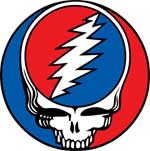Last week the New York Historical Society opened the first large-scale exhibit of material from the Grateful Dead Archive. The archive will be managed by the University of Santa Cruz with special access to four decades worth of videotapes, recordings, fan letters and even a note from President Obama. What is surprising about the archives and the band itself, is that this classic group of rock icons is being touted as one of the first businesses to take an active role in viral marketing and brand influence building.

Beyond the iconic imagery of the Uncle Sam skull, the dancing bears and the jester, the Grateful Dead are so well known for their viral influence on fans that entire academic careers have been spent studying the band as a sociological phenomenon. In a recent article entitled, Management Secrets of the Grateful Dead, writer Joshua Green outlines how the band’s willingness to allow its music to spread via taped concert recordings is similar to that of many of today’s startups.
Said band lyricist John Perry Barlow, “What people today are beginning to realize is what became obvious to us back then–the important correlation is the one between familiarity and value, not scarcity and value. Adam Smith taught that the scarcer you make something, the more valuable it becomes…The Internet doesn’t behave that way…If I give my song away to 20 people, and they give it to 20 people, pretty soon everybody knows me, and my value as a creator is dramatically enhanced.”

The freemium model was implemented with the assumption that merchandise and concert sales would follow. Although the band sought legal action for commercial bootlegging, the group knew that attempting to hold back regular fans from making personal recordings would not only be foolish, but it would be impossible. Instead, an open recording policy for concerts not only pleased Deadheads, but it paved the way for some of the band’s best advocates to recruit others. It’s estimated that recordings for 2,200 of the 2,350 Grateful Dead concerts exist and many of them are available online. Given the fact that all of these recordings required no overhead from the band, it was a great way to crowdsource distribution and increase influence. The group even went so far as to reserve an on-site spot for tapers in a special section behind the soundboard.
This reserved space can be likened to a consumer-facing startup community’s willingness to offer viral tools such as blogging buttons, bookmarking widgets, Facebook fan pages and Twitter integration. The idea here is that a company reserves a space for free distribution in order to gain mindshare and find a conversion funnel for paying customers. In the startup world, the point of conversion has always been up for debate.
Said investor and entrepreneur Dave McClure, “There is a role for freemium, but unless you missed the TPS report the FREE part is only a loss-leader for the MEE-YUM part — it’s a test-drive before you buy something. If your users are just kicking the tires then you need to kick them to the curb eventually.”
That being said, as proven by the Grateful Dead, freemium content and permission to redistribute can trigger a mechanism for broad influence. Because influence generates perceived value, startups may find it easier to overcome barriers for customer acquisition by offering limited teaser content. After all, if the Grateful Dead can overcome wallet friction from more than 40 years of psychedelic drug users, surely a groundbreaking experience can rally loyal (and paying) fans.
Photo Credit: Jim Marshall from the Grateful Dead Archives

















